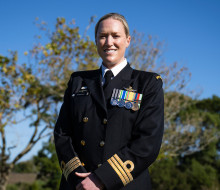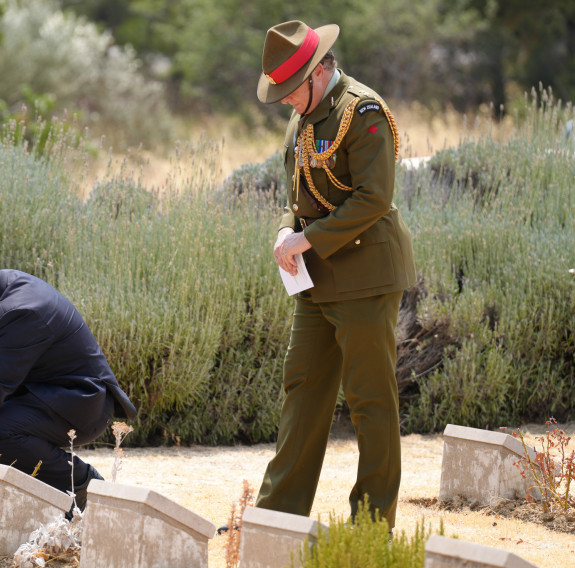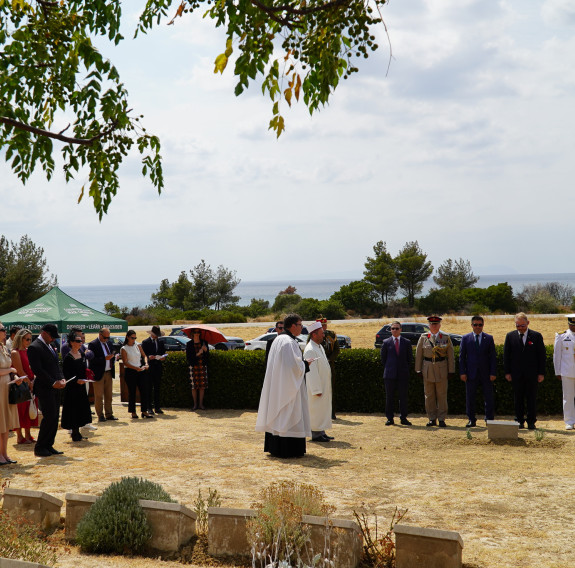
Hawke’s Bay Navy Officer leads New Zealand contingent at Gallipoli
14 May 2025
Unfortunately you are viewing this website on an outdated browser which does not support the necessary features for us to provide an adequate experience. Please switch to a modern browser such as latest version of Google Chrome, Mozilla Firefox, Apple Safari or Microsoft Edge.
Ngā mihi nui
An ‘exceptional’ discovery of scant remains of around 30 First World War soldiers on a Gallipoli battlefield has been followed up with a blessing service after their reburial.
Representatives from four Commonwealth War Grave Commission (CWGC) member countries, including New Zealand, along with the Directorate of the Gallipoli Historic Site (GHSD), attended the small but meaningful service held at No.2 Outpost Cemetery on the Gallipoli Peninsula in Türkiye on Wednesday, local time.
Following devastating bush fires and heavy rain in the area last year, the remains near Chunuk Bair were discovered by the New Zealand Defence Force (NZDF) ahead of Anzac Day commemorations in April(external link).
The CWGC’s Director of Commemorations, Rich Hills, said remains were commonly found on battlefields across Europe, however the scale of this discovery was “exceptional”.
The remains of the soldiers were fragmentary and lacked military artefacts, meaning it was not possible to identify a casualty by name or nationality.
“The CWGC is extremely grateful to the NZDF for its quick action, and to the GHSD for its cooperation, permissions and support,” he said.

Lieutenant Colonel Jacob Murray, Defence Attaché to Türkiye, and Greg Lewis, Ambassador of New Zealand to Türkiye, take part in this week’s service on the Gallipoli Peninsula

The service was held at No.2 Outpost Cemetery, attended by Representatives from four Commonwealth War Grave Commission (CWGC) member countries, and the Directorate of the Gallipoli Historic Site
During the service this week, a blessing was delivered by the Royal Army Chaplains Department, and wreaths were laid by attendee representatives against the newly engraved marker of the internment spot.
Gallipoli commemorative lead for New Zealand, John McLeod, said the discovery of the remains in April was a very poignant and emotional time for the NZDF contingent.
“At the time, we held our own brief service to acknowledge the sacred area. We sung waiata, played The Last Post, and our people performed an incredibly rousing haka. It will stay with many of us for a lifetime,” he said.
“We are incredibly grateful for the quick action and suitably sensitive and fitting honour given to the fallen by the CWGC and Turkish authorities.”
More than 2400 New Zealand personnel are buried or commemorated at sites on the Gallipoli Peninsula, with the vast majority of those listed on memorials to the missing.
Such was the fierce nature and scale of the fighting in the region, the remains of many casualties were not found after hostilities finished and a significant portion of those that were recovered remain unidentifiable.